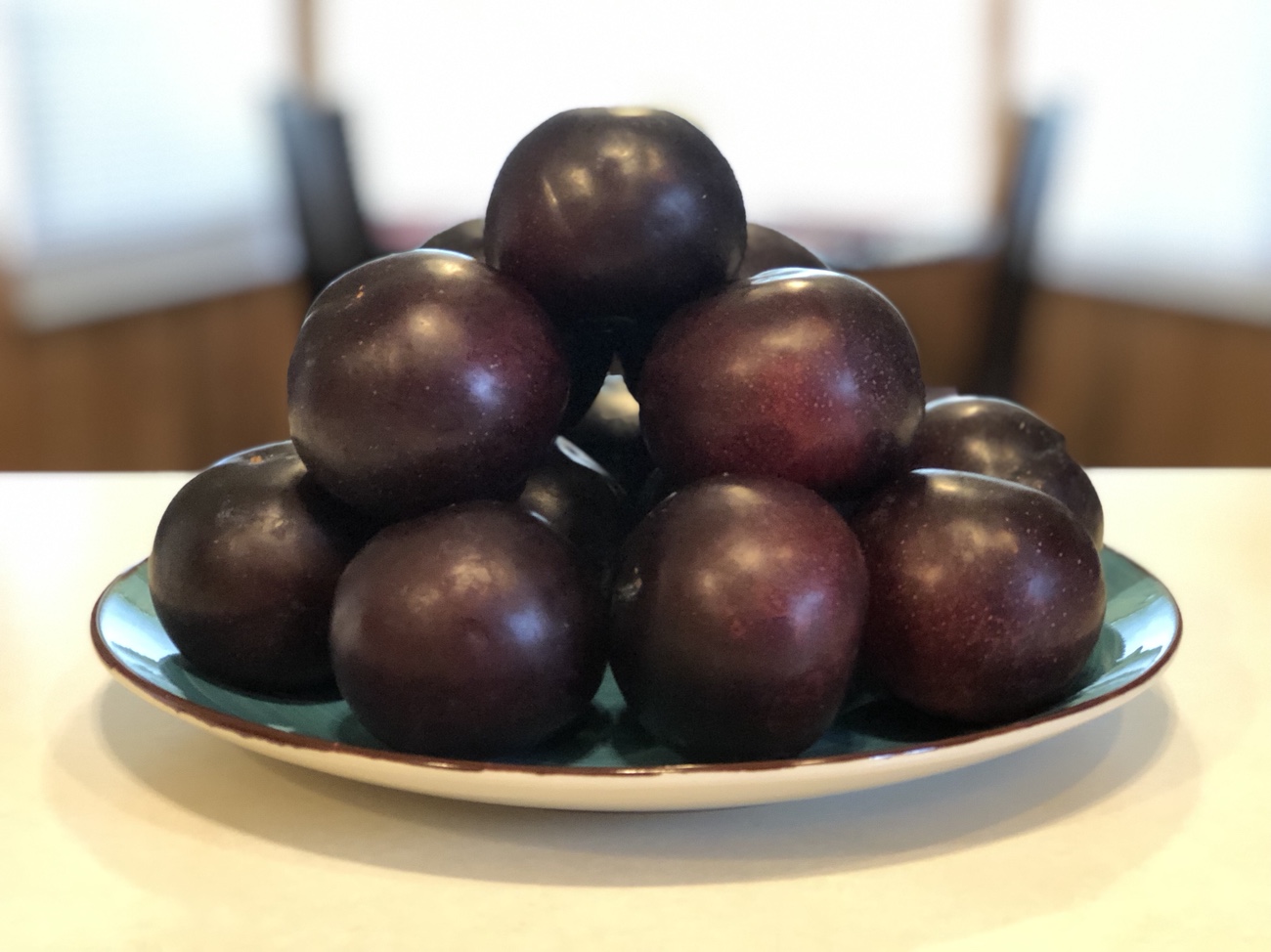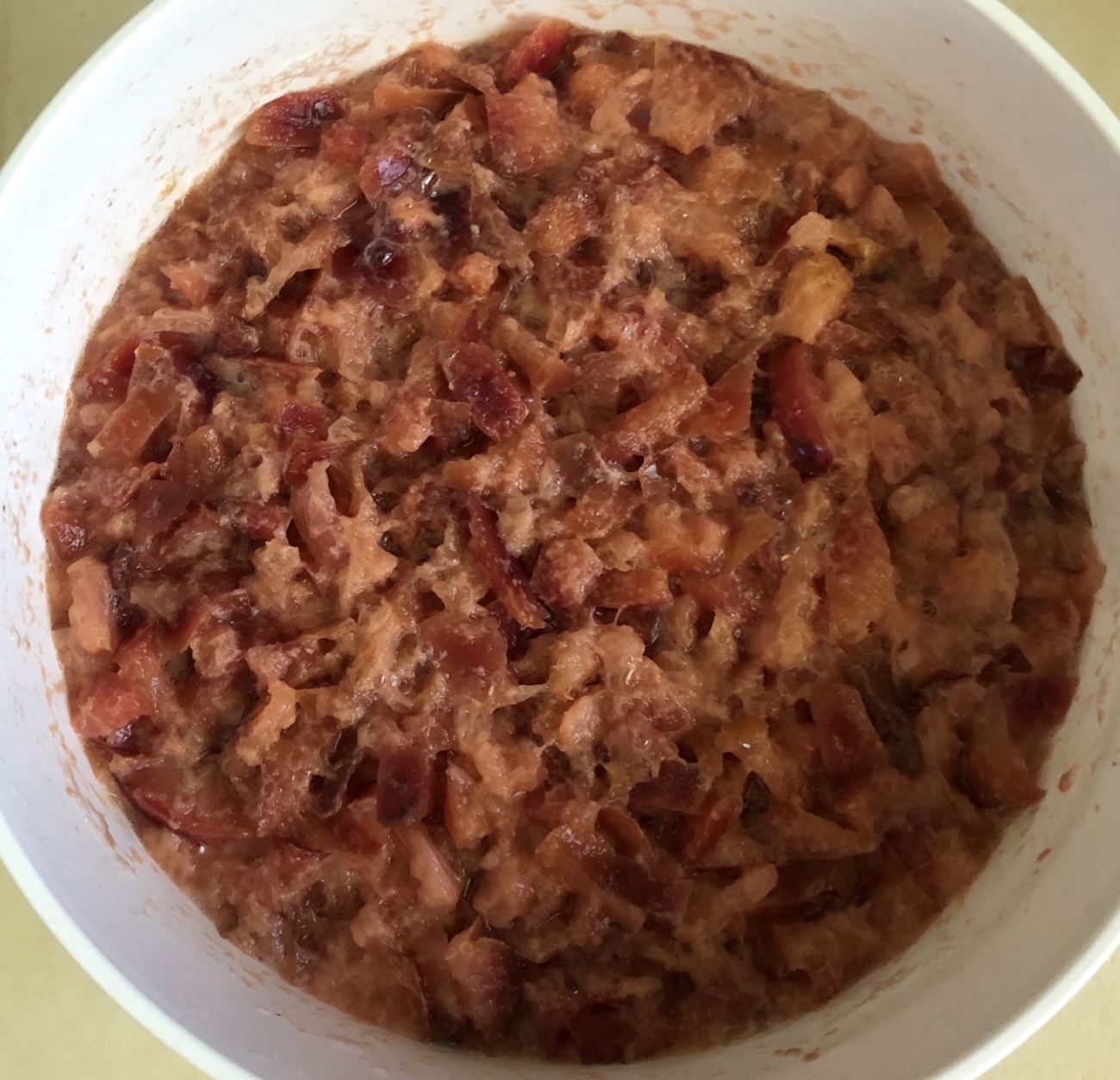
Ever tried plum wine? While the flavor of some wines barely suggest their ingredients, plum is not one of them – good plum wine just tastes of juicy plums.
I grew up with several old heirloom fruit trees in my yard, including a couple of different kinds of plums. Two trees had small, oblong purple plums, one had large (also oblong) purple plums, and there was one with small, spherical red plums. All were delicious – the fresh flavors of a ripe plum is hard to beat.
The plums in my nascent wine are firm and a bit on the tart side. If I had my own trees, I’d wait until the fruit was very ripe and soft to harvest; these store-bought plums were probably picked before they could fully ripen on the tree, so that they could better withstand the rigors of shipping. On my list: plant plum trees!
I used the plum wine recipe in Raymond Massaccesi‘s Winemaker’s Recipe Handbook. The process is simple: chop up the plums, add the rest of the ingredients like acid blend and yeast nutrient, add a crushed Campden tablet, and wait 24 hours to pitch the yeast. Massaccesi includes recommendations for how long the wine should be in the primary fermentor, the secondary, and how often racking should occur before bottling.

A word about this small purple winemaking booklet: it may only be 34 pages long – more like a pamphlet than a “book” – but it is an excellent resource and a very handy size. I just toss mine atop my zippered box of winemaking ingredients and frequently reference it.
A couple of days after the yeast was pitched, it’s actively fermenting and very foamy when stirred. A few more days and I’ll move it into the secondary fermentor to finish out.

In a few months, I’ll be bottling and enjoying this plum wine…and, maybe in a few years, I’ll be able to harvest my own plums and make wine from them, too.

Comments are closed.